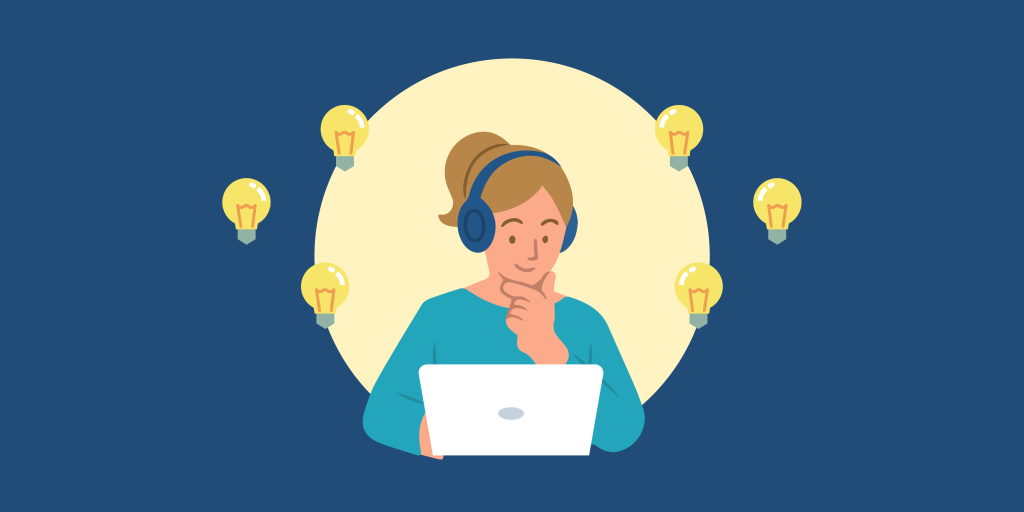This constant digital buzz makes it incredibly tough to focus on one thing at a time. The good news? Your attention span isn’t set in stone. It’s more like a muscle. With the right training, lifestyle tweaks, and consistent practice, you can absolutely regain control and learn how to increase your attention span. If you’re looking for a great starting point, our guide on how to stay focused provides a solid foundation.
Understanding Attention Span
So, what exactly is an “attention span”? Think of it as the amount of time you can concentrate on a specific task without getting distracted. It’s not just one thing, though. There’s sustained attention (holding focus over time, like reading a book), selective attention (tuning out distractions to focus on one source of information), and divided attention (multitasking, which is actually just rapid task-switching).
You might have heard the myth that humans now have a shorter attention span than a goldfish. That’s not quite right. It’s more about how our brains have adapted to processing information in short, quick bursts. We’ve become excellent at scanning and filtering, but that comes at the cost of deep, sustained focus.

Why Attention Spans Are Declining
The main culprit is no surprise: our digital world. Our brains are constantly being rewired by smartphones, social media algorithms designed to hook us, and a never-ending stream of notifications. Research is pretty clear on this—one study showed that our average focus time on a single screen dropped from 2.5 minutes in 2004 to just 47 seconds today.
Every ping, like, and notification triggers a small dopamine hit in our brain’s reward system. This creates a powerful habit loop where we constantly seek out new stimulation, making it harder to settle into long periods of uninterrupted work.
Science-Backed Techniques to Improve Attention Span
Ready to train that focus muscle? These aren’t just random tips; they are evidence-based methods that have been shown to genuinely improve focus.
The Pomodoro Technique for Time Management
I personally love this one for its simplicity. The Pomodoro Technique involves breaking your work into focused 25-minute intervals separated by 5-minute breaks. After four “Pomodoros,” you take a longer break of 15-30 minutes.
This works because it forces you to single-task and gives your brain regular, scheduled rest. Those short breaks prevent mental burnout and help you come back to your task feeling refreshed and ready to concentrate again. Just set a timer and go.
Time Blocking and Single-Tasking
Time blocking is another powerful method. You simply schedule out your entire day in advance, dedicating specific blocks of time to individual tasks. For example, 9:00-9:45 AM is for answering emails, and 10:00-11:30 AM is for writing that report.
The key here is single-tasking. We often think we’re great multitaskers, but our brains are just switching between tasks very quickly, which drains mental energy and reduces the quality of our attention. By dedicating a block to one thing, you give yourself permission to ignore everything else, which can be incredibly freeing and effective when you need to learn how to stay focused at work.
Mindfulness Meditation and Focused Breathing
Mindfulness is the practice of being fully present in the moment. Research has shown that even just a few minutes of meditation a day can strengthen the frontal lobe of your brain—the part responsible for attention and focus.
You don’t need a special cushion or a silent retreat. Just try this:
- Sit comfortably and close your eyes.
- Focus on your breath. Notice the sensation of the air entering and leaving your body.
- When your mind wanders (and it will), gently guide your attention back to your breath without judgment.
Doing this for 5-10 minutes daily trains your brain to notice when it’s distracted and gives you the power to bring your focus back.
Lifestyle Changes That Boost Focus
Your daily habits are the foundation of good concentration. If you ignore these, the techniques above will only get you so far.

Prioritize Quality Sleep
Sleep is non-negotiable for a healthy brain. When you sleep, your brain clears out toxins, processes information, and consolidates memories. If you’re consistently sleep-deprived, your ability to pay attention will nosedive. Aiming for 7-9 hours of quality sleep is one of the most impactful things you can do for your focus.
Exercise Regularly for Brain Health
You don’t have to run a marathon. Just 30 minutes of moderate exercise a day—even a brisk walk—increases blood flow to the brain, which improves cognitive function. Exercise helps build neuroplasticity (the brain’s ability to form new connections) and is a fantastic way to clear your head and boost your energy for focused work.
Eat Brain-Boosting Foods
The food you eat directly fuels your brain. To support concentration, try incorporating more:
- Omega-3 Fatty Acids: Found in fatty fish like salmon, plus flax seeds and walnuts.
- Antioxidants: Berries, especially blueberries, are packed with them.
- Healthy Fats & Vitamin E: Avocados, nuts, and seeds are great sources.
- Complex Carbs: Oats and brown rice provide a steady supply of energy, avoiding the crash from sugary snacks.
Attention Training Exercises and Activities
Just like physical exercise, you can do specific activities to challenge and strengthen your attention.
Brain Games and Cognitive Puzzles
Activities that require concentration and problem-solving are excellent for your brain. Think of things like:
- Sudoku
- Chess
- Crossword puzzles
- Jigsaw puzzles
- Memory card games
These games train your cognitive resilience and make it easier to maintain focus on other tasks. They’re especially helpful for anyone trying to figure out how to stay focused when studying.
Martial Arts and Attention State Training
This one is fascinating. Research from Bangor University found that martial arts can lead to long-lasting improvements in focus. It combines physical movement with intense mental discipline, a concept called Attention State Training (AST). You have to be completely present to react and perform, which is an incredible workout for your attention.
Alpha Binaural Beats and Auditory Stimulation
This is a more experimental technique, but the research is promising. Listening to alpha binaural beats (audio tracks with a specific frequency of 8-13Hz) through headphones can help synchronize your brainwaves into a state associated with relaxed focus. You can find plenty of these tracks on YouTube or streaming apps.
Digital Wellness and Environment Optimization
You can’t control the whole world, but you can control your immediate environment and your relationship with technology.

Reduce Digital Distractions
Be ruthless here.
- Turn off all non-essential notifications on your phone and computer.
- Use “Do Not Disturb” or “Focus Mode” when you need to concentrate.
- Try working on a single screen instead of two.
- Create phone-free zones or times, like during dinner or the first hour of your day.
Create a Focus-Friendly Environment
Your physical space matters. A cluttered desk can lead to a cluttered mind. Try to keep your workspace clean and organized. Control noise with headphones if you need to, and make sure you have good lighting. Having a dedicated space for work helps signal to your brain that it’s time to focus.
Schedule Strategic Breaks
Your brain isn’t meant to focus for eight hours straight. Strategic breaks are essential. Get up, stretch, walk around, or do a few minutes of mindful breathing. Research consistently shows that short, regular breaks actually increase productivity and help you maintain high energy levels throughout the day.
Developing Long-Term Attention Habits
Improving your attention span is a long game. It’s about building sustainable habits.

Practice Active Listening and Reading
Strengthen your attention muscles in everyday life. When someone is talking, really listen instead of just waiting for your turn to speak. When you read an article or a book, do it deliberately. Try taking notes or summarizing what you just read to ensure you were engaged.
Write and Follow a Purpose Statement
Why do you want to be more focused? When you have a clear vision of your goals, it’s easier to push through distractions. Having a clear purpose gives you the motivation to stay on track. This is crucial for anyone learning how to stay focused on your goals in the long run.
Track Your Progress and Adjust
Pay attention to what works for you. Maybe the Pomodoro Technique is a perfect fit, or perhaps time blocking suits your style better. Try timing how long you can focus without getting distracted and see if that number improves over a few weeks. Be patient with yourself and celebrate small wins.
Improving your focus is a journey, not a destination. It’s about making small, consistent changes that add up over time. I hope these strategies give you a great place to start. For more thoughts on wellness and personal growth, feel free to explore more at www.notonetype.org.


You may also like this
How to Stay Focused on Your Goals: 12 Strategies That Actually Work
Staying focused on your goals can feel like trying to walk a straight line in...
Nov
How to Stay Focused When Studying: 12 Techniques That Actually Work
Let’s be real: trying to stay focused while studying can feel like a battle. One...
Nov
How to Stay Focused at Work: Simple Strategies That Actually Work
Staying focused at work can feel impossible when emails pile up, notifications buzz constantly, and...
Nov
How to Stay Focused: 12 Tips to Improve Concentration and Productivity
It feels like a modern-day superpower, doesn’t it? The ability to just sit down and...
Nov